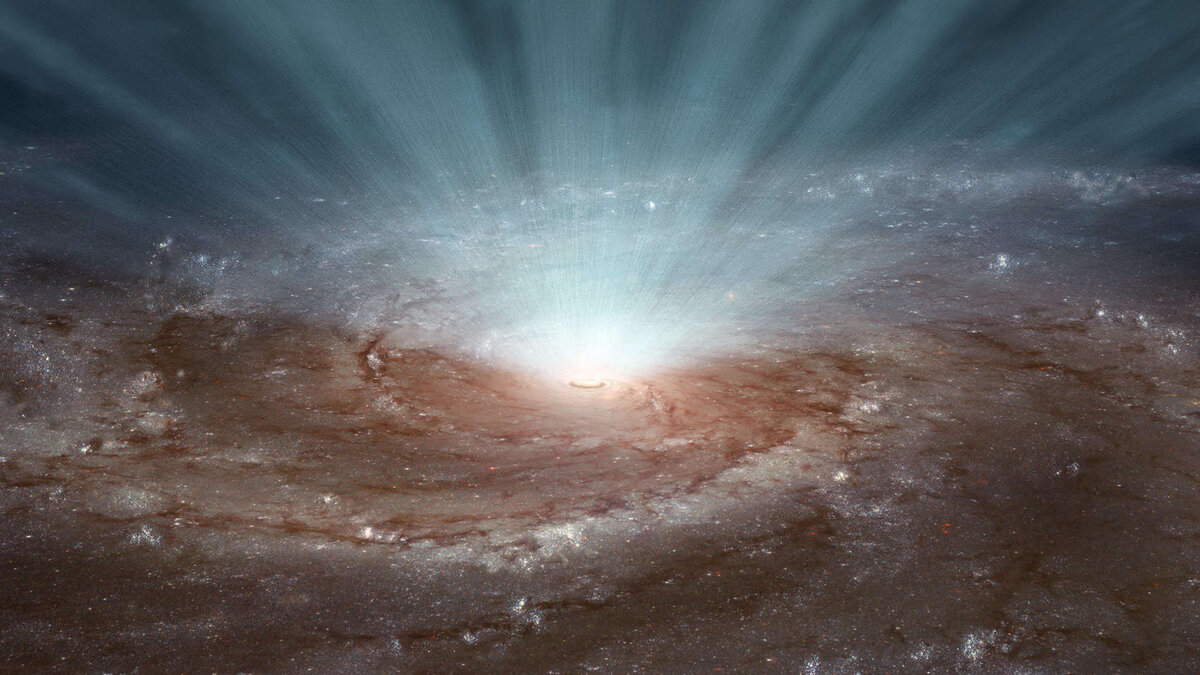The key to directly detecting dark matter may be in the wind.
Even though it surpasses observable matter in the cosmos by a factor of eight, the unknown material continues to evade researchers. All laboratory attempts to directly detect dark matter, which is only detected indirectly by the gravitational influence it has on the movement of stars and galaxies, have failed. These efforts have rested on the belief that dark matter interacts with regular matter in ways other than gravity (SN: 10/25/16). Windchime will seek for dark matter using the only force it is certain to experience – gravity. However, this experiment will not be conducted for decades.
Daniel Carney, a theoretical physicist, described the technique in May at a meeting of the American Physical Society’s Division of Atomic Molecular and Optical Physics in Orlando, Florida. “The underlying idea is quite simple,” he said. As the solar system whips around the galaxy, the Windchime detector would attempt to detect a dark matter “wind” sweeping past Earth, analogous to a wind chime on a porch rattling in a breeze. According to astronomical data, if the Milky Way is predominantly a cloud of dark matter, we should be moving through it at approximately 200 kilometers per second. This generates a dark matter wind for the same reason that you feel a breeze when sticking your hand out the window of a moving automobile.
The Windchime detector is predicated on the idea that a group of pendulums will swing in a breeze. In the case of backyard wind chimes, the moving air causes metal rods or dangling bells to jingle. The pendulums of the dark matter detector are arrays of minute, ultrasensitive detectors that will be perturbed by the gravitational pulls exerted by passing dark matter particles. Instead of air molecules bouncing off metal chimes, the gravitational attraction of the particles comprising the dark matter wind would generate distinct ripples as it blows through a billion or so sensors in a box measuring around one meter on each side. In the nearly 40 years that scientists have been investigating dark matter in the laboratory, no one has used gravity to seek for it. Gravity is a relatively weak force that is difficult to isolate in scientific investigations.
Carney of Lawrence Berkeley National Laboratory in California explains, “You’re hunting for dark matter to generate a gravitational signal in the sensor.” “And now you question, could I possible perceive this gravitational signal? In the initial estimation, the answer is no. It will be quite challenging.” In 2020, Carney and a small number of coworkers pursued the project despite this fact. “Thirty years ago, this proposal would have been absurd,” he argues. “It’s still somewhat bizarre, but it’s borderline insane.”
Since then, twenty physicists have joined the Windchime Project partnership. They have a Windchime prototype constructed using commercial accelerometers and are using it to develop the software and analysis that will lead to the final version of the detector, but it is a far cry from the final design. Carney predicts that it could take a few more decades to create sensors capable of measuring the gravity of even dense dark matter.
Carney bases the timeline on the creation of the Laser Interferometer Gravitational-Wave Observatory, or LIGO, which was meant to detect gravitational ripples caused by the collision of black holes (SN: 2/11/16). When LIGO was first conceptualized, it was evident that the technology would require a one hundred million-fold improvement, according to him. Decades of research have produced an observatory that can detect gravitational waves. Regarding Windchime, he explains, “we’re in the same same boat.”
Even in its final configuration, Windchime will only be sensitive to dark matter particles with masses comparable to a dust particle. On the spectrum of known particles, this is enormous: almost a million trillion times the mass of a proton.
Katherine Freese, a physicist at the University of Michigan in Ann Arbor who is not a member of the Windchime collaboration, states, “There are a variety of very interesting dark matter candidates at [that scale] that are worth looking for… including primordial black holes from the early universe.” She observes that black holes eventually evaporate, bleeding mass back into space, which might leave many relics produced just after the Big Bang with a mass detectable by Windchime.
Dan Hooper, a physicist at Fermilab in Batavia, Illinois, who is unaffiliated with the research, argues that even if the experiment never detects anything, it will stand out from existing dark matter detection strategies. Because it would be the first experiment capable of completely ruling out certain types of dark matter.
Even if the experiment turns up nothing, Hooper adds, “the great thing about [Windchime]… is that dark matter particles are not in this mass range, regardless of what we know about them.” Existing tests may not be able to detect anything due to faulty assumptions about the forces affecting dark matter (SN: 7/7/22).
Windchime will be the only experiment ever conceived that will clearly reveal what dark matter is not by observing nothing. With a bit of luck, though, it could discover a stream of miniature black holes or even more exotic dark matter particles as we orbit the Milky Way.


